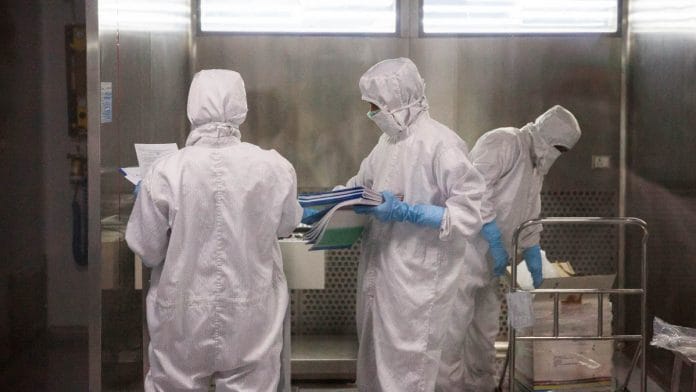The only two people lucky enough to be cured of HIV infection were unlucky enough to find themselves with cancer and HIV at the same time. What saved them both were stem cell transplants from bone marrow donors — last-ditch attempts to save them from the cancers. But in the process, doctors used donors who had a genetic mutation rendering them, and their bone marrow cells, resistant to the virus.
The right reaction to the news of the second cure is, as several researchers have told me, nuanced. It is a big deal to AIDS researchers, who for years have been quietly seeking to go beyond managing the disease, and instead shooting for a complete cure. This second case shows what might be possible with a lot more work. But there’s an ever-present danger of raising false hopes for millions of people living with HIV, because the stem cell transplant is neither practical nor safe enough to use on anyone who has just HIV and not an otherwise fatal cancer.
AIDS researchers have raised false hope before. In 1997, David Ho of the Aaron Diamond Institute announced that the new crop of antiretroviral drugs would probably be able to knock out the virus in patients after they continued the regimen for a number of years. He was soon proven wrong, when scientists discovered that the virus is very good at hiding from part of the immune system called memory T cells.
And so, cowed by that failure, the research community nearly ignored the news that an obscure doctor in Berlin cured a patient, Timothy Brown, using a stem cell transplant, in 2008. Journals refused to publish a paper, the New York Times played the story deep inside the paper, and at a major meeting, the researcher, Hero Hutter, was relegated to a mere poster session.
A few people recognized the importance of the case, including AIDS researcher Steven Deeks at the University of California San Francisco, who later became the doctor treating Brown, who had become known as the Berlin patient. Deeks told me that at the time the claim was believable because the biology all made sense. The Berlin patient had his immune cells replaced with ones from a donor with a genetic mutation that disables a receptor called CCR5. Cells without a working CCR5 receptor are essentially locked up to the virus.
While bone marrow transplants aren’t likely to become standard HIV treatment, Deeks said there’s promising research in using gene therapy to alter the CCR5 receptors. Some are doing this using a so-called viral vector, to insert the HIV-resistant version of the gene into cells, and others are trying to remove a patient’s bone marrow, treat it, and return it with at least some resistant cells.
Also read: Targeting a single cell that begins tumours can revolutionise cancer treatment
These avenues, if they succeed, might not completely eradicate the virus from the body, but there’s hope they might allow the patients to stay healthy without the currently used daily drug regimen, which is both expensive, and for some, onerous. (It’s very hard to prove a complete cure – though this is what the researchers suspect has happened.)
One limitation of current antiretroviral therapy is that patients who carry the virus for a few years without getting treatment can suffer damage to their immune systems. They can generate a constant, low-level immune response that increases the risk of heart disease and cancer, and can accelerate aging. Since effective antiviral drugs didn’t exist before the mid-1990s, many people infected before this time suffer from these long-term effects.
Harvard AIDS researcher Bruce Walker said that if you talk to people who are taking HIV medications, they desperately want to get off them. “They are tethered to these drugs that don’t make them feel sick but don’t make them feel normal either,” he said. What they really want is a cure.
He’s hoping that this second cure case will call attention to his work on another group of unusual people — not those with the mutation that makes them resistant to HIV, but another small fraction who test positive for HIV and yet never develop detectable virus, and never get sick. Walker has tracked such people, dubbed elite controllers, and is starting to figure out how they get infected but remain functionally cured.
Walker said another positive sign with this second cure is that in the first case, the transplant almost killed the patient, but in this case, it did not.
Between the first cure and the second, however, there were a number of attempts to cure similar patients with stem cell transplants and all failed. This was extremely discouraging, but researchers learned from all the failures, said Deeks. Sometimes the transplant failed to take, or sometimes the cancer was too advanced. In a few other cases, the virus had mutated to a form called X4, which is still able to get into the modified cells.
Also read: On World AIDS Day, good news for India — fall in new HIV cases is helping overcome hurdles
Other people are hoping that even without a cure, new drugs that prevent infections can help stem the spread of HIV until, some years in the future, it is eradicated from the human race. It’s a good goal, but a cure would help millions of current HIV patients. There are about 38,000 new cases reported each year in the U.S. and 1.8 million worldwide. And the virus keeps surprising researchers, so it’s best to keep up the fight on all fronts.-Bloomberg






